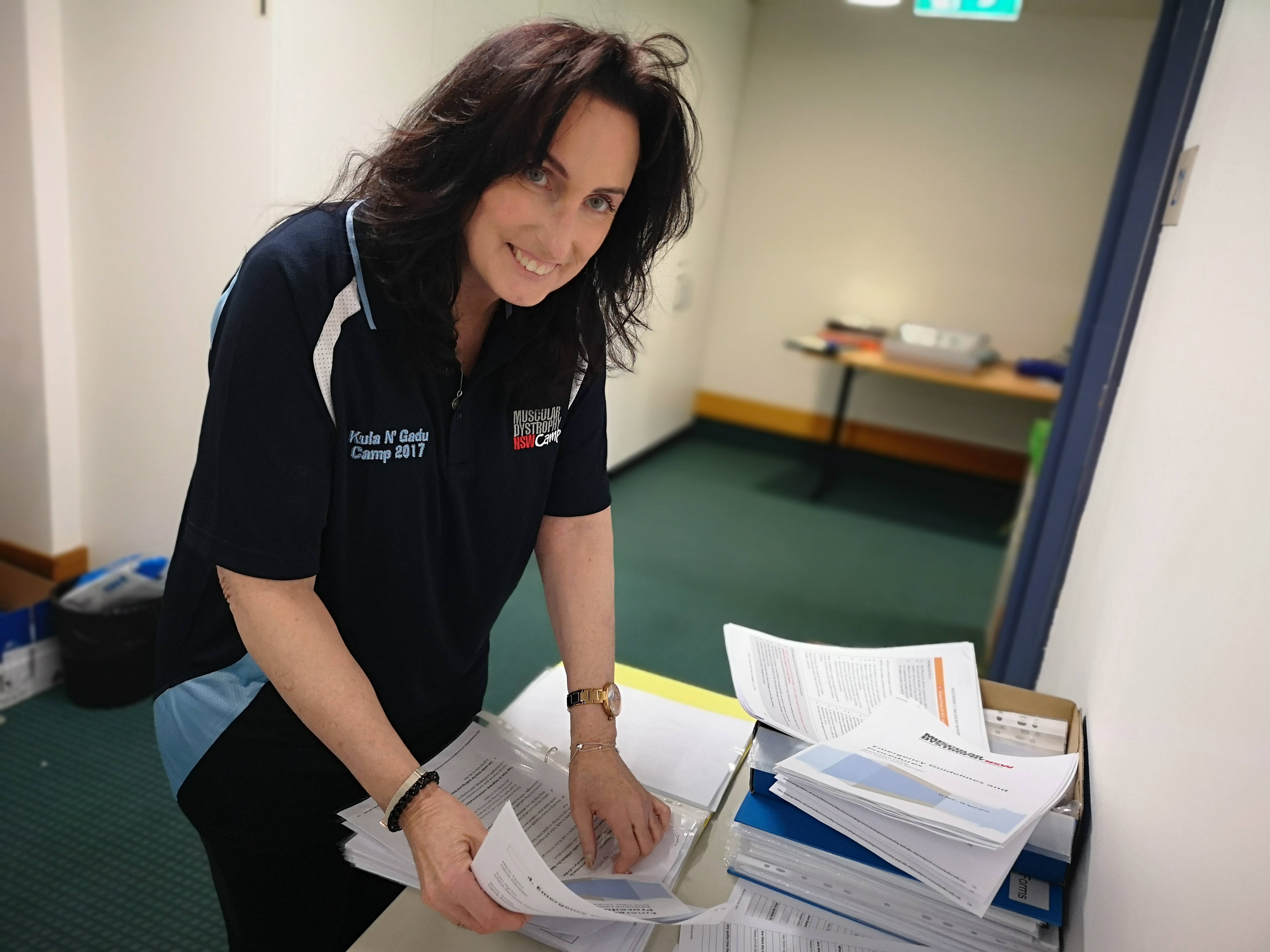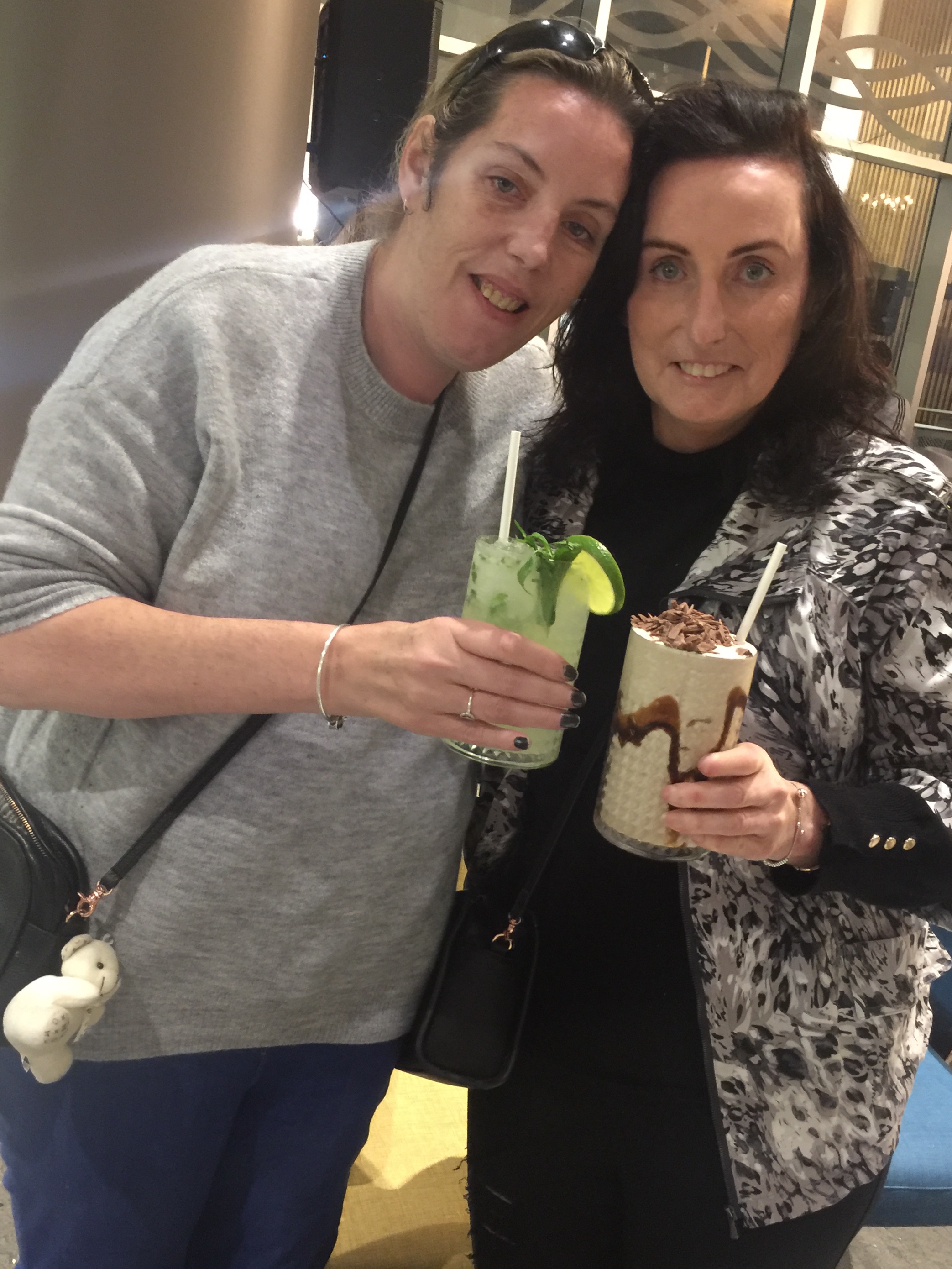Interview with a Grandmother – A Family Story Part 1
Anne-Maree Warman’s work at the Teacher’s Mutual Bank, allows her to volunteer for MDNSW as part of the bank’s staff volunteer program. Anne-Maree has kindly agreed to be interviewed about her connection with MDNSW.

How has Muscular Dystrophy affected your life, and how did you come in contact with MDNSW?
Thanks for giving me the opportunity to talk about our story today. My story with MD is our family’s story. My daughter Emma, who is now in her thirties, was diagnosed with a condition called Myotonic Muscular Dystrophy or MMD for short, which is the most common type of Muscular Dystrophy. My grandson Blake also has MMD.

When did the Myotonic MD present symptoms for Emma?
As a child as a baby she was just a very normal healthy baby. We never had any illnesses, we never had sleepless nights so to speak or anything unusual. Emma could ride a bike at 4 with training wheels, could roller skate, and was very active.
I think I probably noticed things in Emma when she was about 10 years old. But the doctor said “No, she’s perfectly fine. No, it’s not this, no, it’s not that”. The first thing that alerted me was when she was playing netball. Her movements, compared to the other girls in the team, were much slower. The way that she passed the ball, and a few other things. She struggled at school and had to work very hard at everything. She was never at the top of the class, but she wasn’t at the bottom either.
Does MMD effect other members of your family?
Emma’s grandparents were tested for MMD and it turned out that it had come from Emma’s grandfather on the paternal side. He was in his 80s though, and he didn’t know until that stage in his life that he carried the myotonic dystrophy gene. So then all of Emma’s aunts and uncles were tested, the ones that wanted to be tested, and they all carried the gene. Emma’s father was tested and he carried it also. When the gene is passed on to the next generation, we believe the expansion of the gene can become bigger.
Does that mean that the effect of the myotonic dystrophy becomes more significant?
Yes, that’s my understanding. Emma’s father didn’t really show any physical symptoms and from what we’re learning about it, MMD can affect different people in different ways, at different times in their life. Up until Emma was in her mid-20s, you probably wouldn’t know what it was unless you knew about myotonic dystrophy, but now she’s older, it’s more prominent.
So it’s been a bit progressive for her, she’s been more affected as she’s gotten older?
Yes, she’s become a lot weaker and she’s lost quite a bit of weight. She’s very slow with her movements and gets very tired.
So fatigue is a part of MMD?
It was only recently that we found out fatigue was part of her condition, because Emma was always very, very tired, but mainly in the day. So yes excessive daytime sleeping can be part of MMD. We weren’t aware of that.
Does she use ventilation now, or anything at night to support her?
No, she doesn’t use any ventilation, it hasn’t got to that point, but there is a particular tablet, which is called modafinil, and it’s something that we’ve discovered, and actually, they prescribe this to pilots in the air force when they are doing long missions…to keep them awake, and there’s no actual sign of harsh side-effects or anything like that.
So that medication is helping Emma?
Most definitely. I can notice straight away when Emma has a big day and she has to be up for a long time, she’s got doctors appointments, or school things with her children and she knows that she’s got to be awake, I know that when she’s had the tablet. I don’t live with Emma, but I notice straight away, with her speech, it’s not as slow, it’s not as slurry, she’s more switched on, and she’s more alert. So that’s great. She’s probably had that now about a year, it certainly does help.
So you’ve been learning about MMD as you go along then?
Emma wasn’t really diagnosed until she was 18 and I think we had probably buried our heads a bit in the sand as well. We didn’t know enough about the condition, really, to know the stages of the progression. It’s only been in the last 10 years or so that we’ve really learnt a lot about it because Emma had her first child, which is my grandson Blake, who is now 16 and he also has the condition. But his expansion is much higher than Emma’s, so he has intellectual disability, plus the physical side of it. But Blake hasn’t gone to the point in his condition where he has significant muscle wasting, so he’s still quite active and mobile.
We’re learning a lot more with him. When he went for his genetic testing at the Children’s Hospital Westmead, I think it was Dr Kristi Jones who asked, “Are you a part of MDNSW?” We’ve had our connection with MDNSW for about 6 years now. We didn’t come in contact with MDNSW early enough, but it’s been a great learning experience, fantastic support, motivation and it’s all been very positive.
This article contains general information only and MDNSW does not recommend or endorse any particular treatment or drug. It is not intended to replace the advice provided by your own doctor or medical or health professional.
Read Part 2
More information: Neuromuscular Fact Sheets
